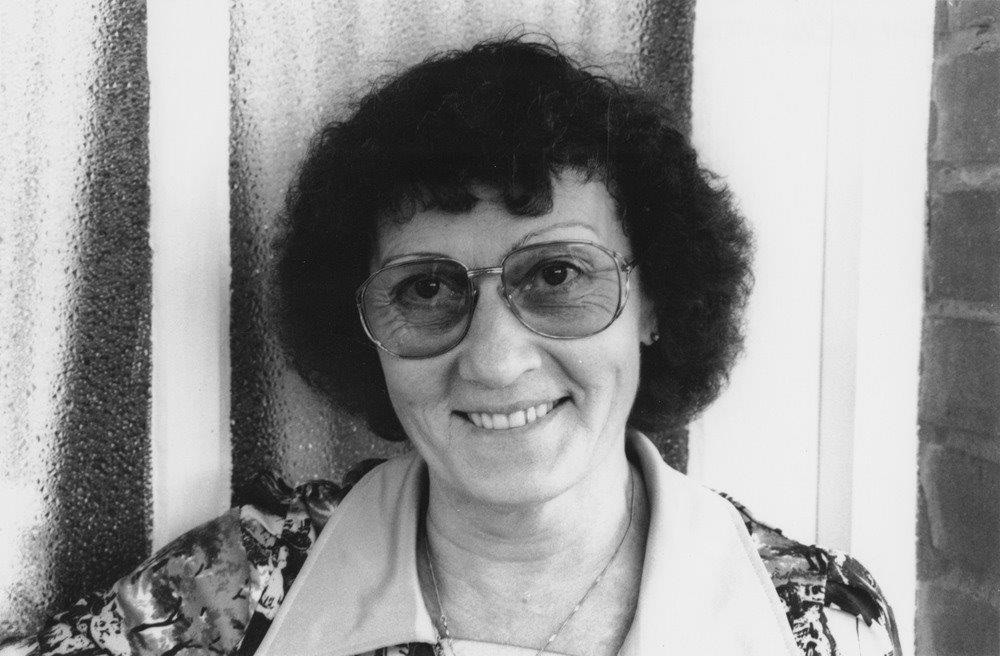Guest Blogger - Dr. Donna Kleiss discusses Wacol Immigrants Holding Camp and interviews conducted with women migrants from SLQ's OH24 Migrant Women Oral History Collection

Dr. Donna Kleiss
“… The decision to accommodate those migrants on arrival in well-organised reception and training centres … is an entirely new departure from previous immigration plans. It is in fact revolutionary, and it is the first experiment of its kind to be undertaken in this country. I am confident that it can only result in much benefit, both to Australia and to the migrant … “
(Arthur Calwell, Minister for Immigration, 1949)
Many readers of Australian history would have heard of the Bonegilla Migrant Camp in Victoria, established after WWII to receive non-British migrants. Some Queenslanders might also be aware that Yungaba – the historic white building that sits so gracefully under Brisbane’s Story Bridge – operated as a migrant reception centre for many years after its construction in the 1800s. But few may be aware that Queensland had its own post-war migrant reception centre operating during the same period as Bonegilla. The Wacol Immigrants Holding Camp was purpose-built in 1947 to receive non-British post-war immigrants, the first of whom were displaced persons ('DPs') from war-torn Europe.
The Wacol camp started its life as an army facility, and was used extensively during WWII as a training and storage depot. The Australian government converted both ex-army camps (Bonegilla and Wacol) into migrant reception centres, with very little modification. For the most part, migrants were housed in Nissen huts, the iconic corrugated iron structures with exposed timber frames and wooden floors. Unlike its Victorian contemporary––which now is home to its own museum––the history of Brisbane’s post-war immigration camp has largely been forgotten. The site that it once stood on is now home to the notorious Wacol prison.
European migrants who came here as young adults in the decades following WWII would now– if still living– be in their 80s or even 90s, and their children now in their 60s or 70s. The historical changes they have seen in their lives are immense, and the impact they had on the development of post-war Australia is hard to adequately measure. My father, himself a Dutch migrant came to Australia at the age of 5 with his mother, 3 sisters, and 3 brothers aboard the ship, Fairsea. It took 6 weeks to get here. My grandfather arrived two years earlier, and spent those years out here alone labouring for the Australian government on post-war reconstruction schemes. This was the agreement for those arriving under an assisted passage — my grandfather and thousands of other post-war immigrants re-paid their passage (and that of their families) by working as labourers for a period of two years. After that, they were free to assimilate into Australian society.
In the early years of the Wacol Immigration Camp, families were routinely separated with the women and children remaining in the camp, while the men laboured across Queensland to re-pay their passage. I conducted a research project aimed at documenting the specific experiences of women immediately following their arrival in their new country, using oral history interviews to record their memories and perspectives. Oral history was chosen because it adds narrative to the history of immigration. Through memory, it allows us to experience what is was actually like and as a source, oral history helps us to contextualise more formal documentary sources of history.

Wacol Immigrants Holding Camp resident Christine Braun
State Library of Queensland has digitised a collection of interviews that I conducted with fifteen Polish, Dutch and German women about their experiences of the Wacol Migrant Centre. The bulk of this oral history collection, OH24 Migrant Women Oral History covers life at the Wacol camp during the period 1947-1962, although some of the material extends into the late 1960s. The collection includes digitised audio interviews, searchable transcripts of interviews, as well as photographs of the interviewees (taken at the time of their interview). Some original photographs from the camp are also included. The interviews were conducted during 1991 and 1992, and formed the primary research for my Honours dissertation at The Australian National University. The scope of the project included an exploration of the official governmental history of post-war immigration to Australia and the government’s decision to establish these ‘holding camps’, comparative to the ‘personal’ histories of the women whose introduction to Australia was at the Wacol Immigration Centre.
There is so much Australia and so few Australians. The need for more citizens is one that has a purely national aspect, one that transcends politics or any other consideration … (Arthur Calwell, Minister for Immigration, 1949)
When I came to the employment office they just looked at me and said, 'well go home and have children … we want children here … we want a new population …' (Interview with Helga Purl 8/12/1991)
Comments
Your email address will not be published.
We welcome relevant, respectful comments.